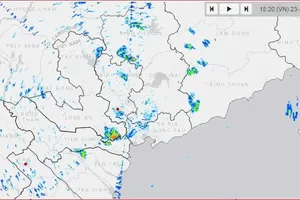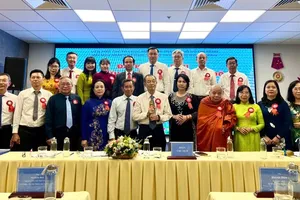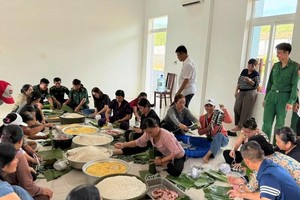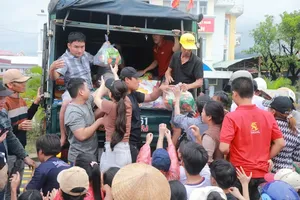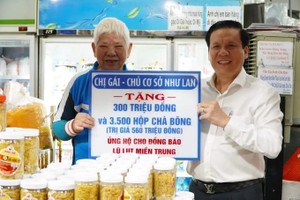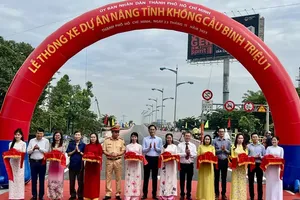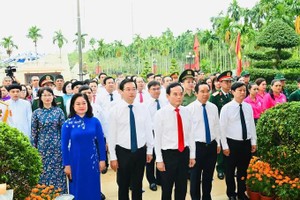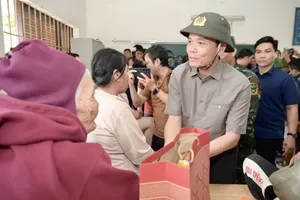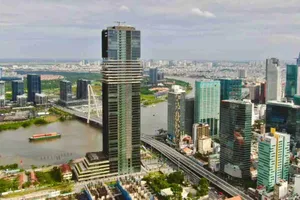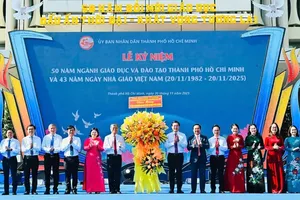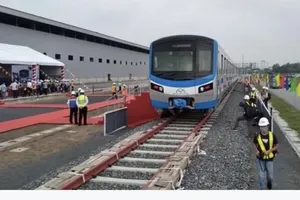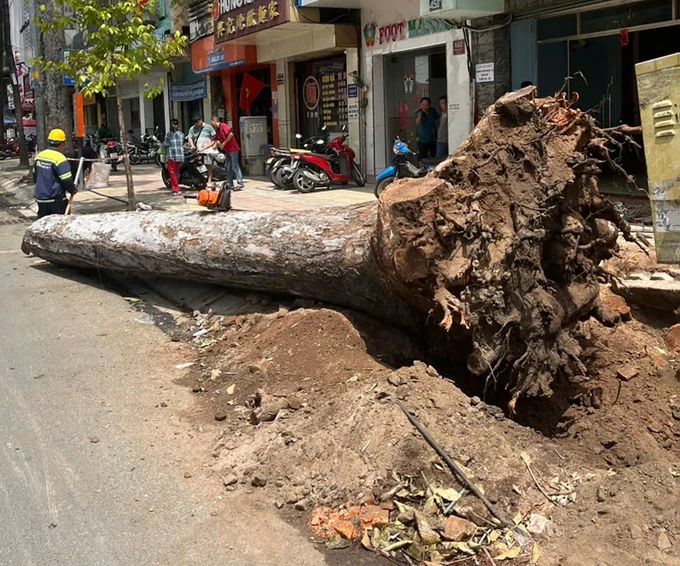
Recently, residents and workers in several central districts have expressed shock at witnessing swathes of green trees being cut down amidst the ongoing sidewalk renovations. In the evening of April 28 alone, another oil tree, number 416 on Tran Hung Dao Street in District 5, was felled. This brought the total number of trees lost on this single street to 18 in a startlingly short period. Oil tree number 334 soon met the same fate.
Earlier monitoring reports from regulatory agencies indicated that by the end of March, 185 trees on the Nguyen Van Cu to An Binh section of Tran Hung Dao Street had been affected, with seven already removed and nine more slated for felling.
District 5 saw further losses. 12 trees cut on Mac Thien Tich Street (on the Ngo Quyen to Phuoc Hung section), 11 on Hai Thuong Lan Ong Street (on the Vo Van Kiet to Chau Van Liem section), one on Ngo Nhan Tinh Street, and three on Trang Tu Street.
A similar scenario unfolded in District 11, where numerous trees were cut down after sidewalk reconstruction damaged their root systems.
Specifically, on Han Hai Nguyen Street, authorities felled 29 trees with plans to remove two more. Tran Quy Street lost five trees. On Le Dai Hanh Street, two trees are planned for removal on the Nguyen Chi Thanh to 3 Thang 2 section, while five trees were already cut on the 3 Thang 2 Street to Binh Thoi section. On Lu Gia Street, three trees have been felled, with plans for three more. Nguyen Thi Nho Street also has plans for three removals. Ly Thuong Kiet Street has seen seven trees cut down, among others.
Statistics from the HCMC Infrastructure Management Center (HIMC) reveal that by late March, 90 trees across Districts 1, 5, 11, and Tan Binh required felling or replacement due to safety risks posed by the sidewalk construction and upgrading. This figure, alarming as it is, does not account for the additional number of trees merely damaged during these renovation projects.
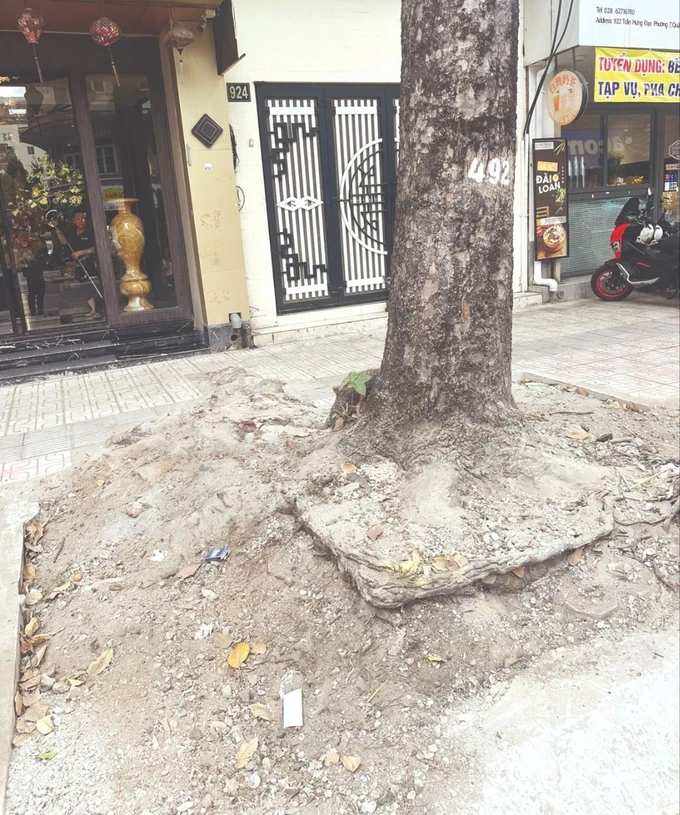
HCMC has set an ambitious target to achieve an urban green space area of at least 1.5m² per person by 2040, equating to roughly 16,500 hectares for its projected 11 million residents. Yet, current statistics from the HCMC Department of Construction reveal a stark reality. Average urban green space now stands at a mere 0.7-0.9m² per person, drastically below the World Health Organization’s minimum recommendation of 9m². Despite the 2040 target, progress on many park projects, particularly large-scale ones, remains frustratingly slow.
Numerous experts in architecture, urban planning, and environmental science warn that the current inconsistent and lax management practices risk ecological imbalance and a decline in the quality of urban life.
Prof Dr Vo Trung Tin from the HCMC University of Architecture emphasizes the invaluable nature of mature urban trees, often decades or even centuries old. These cannot be simply replaced by small saplings. The ecological, aesthetic, and cultural value provided by a row of old trees is immense and should be regarded as part of the city’s heritage. Beyond their visual appeal, trees are vital for regulating microclimates, reducing pollution and noise, and enhancing public health.
Architect Tran Huu Ngoc of the Vietnam Urban Planning and Development Association asserts that preserving green trees is entirely feasible in most sidewalk or infrastructure renovation projects. He recommends that large cities like HCMC should adopt modern technologies such as root balling techniques that avoid trunk damage, and utilize GPS as well as sensors to monitor the health of perennial trees. These effective conservation methods are already common in countries like Singapore and Japan.
Dr Le Huu Tien, an urban governance expert, proposes the establishment of an independent green tree appraisal council. This body, comprising experts in biology, planning, architecture, community representatives, and government officials, would review all proposals for felling or replacing trees. This would ensure decisions are scientifically grounded, transparent, and enjoy social consensus.
He argues that entrusting the life-or-death decision for trees to a single unit is prone to power abuse and conflicts of interest, particularly in large sidewalk or street expansion projects. Felling old trees requires meticulous consideration. Design adjustments to preserve trees should be prioritized over removal. If removal is unavoidable, a comprehensive replanting plan with appropriate density and species must be implemented to compensate the ecosystem.

